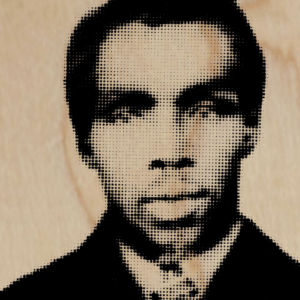The Robbins House
Peter Hutchinson, The Robbins House’s Final Resident
narrated by Celeste Pinto
Peter Hutchinson, The Robbins House’s Final Resident
Peter Hutchinson was an African-American Concordian who lived from 1799 to 1882. Peter married Nancy Dager at the First African Baptist Church in Boston, with whom she had six children. Peter and his large family were the last African-Americans to own The Robbins House, and they lived there from 1852 to 18681.
Prizewinning Work
Described by another farmer as “the ablest common laborer I have ever known,” Peter constructed buildings, slaughtered livestock, and sold pigs to other farmers. He won first prize in the plowing contest at the 1835 Middlesex agricultural fair. Peter signed petitions opposing railroad discrimination and the 1850 Fugitive Slave Law. Peter “had more local knowledge of wood lots and meadow bounds than any man in town,” according to J.S. Keyes. During his time in the Robbins house, the farm lane became known as Peter’s Path, a spring was known as Peter’s Spring, and the woods nearby were called Peter’s Woods. Fifty years after his death, a local firewood business was named the Peter Hutchinson Company in his honor4.
Peter’s Connections to Concord’s Pantheon of Authors
Emerson’s poems “Peter’s Field” and “Dirge” were set on the farm overlooking the Great Meadows during the years Peter Hutchinson owned it. Thoreau expressed respect for Peter Hutchinson’s knowledge of Concord’s woods, fields, and wildlife throughout his journals.
In 2013, The Robbins House and the Friends of Sleepy Hollow provided a marker for Peter Hutchinson and his family at Sleepy Hollow Cemetery
Sending Off The Robbins House
After Peter, the house saw an extensive history. It passed through many hands, was situated on two more properties, and was even rented out for a period of time. Today, it serves to inspire conversations about race and social justice issues, using its inhabitants, such as Peter, to better understand the ways in which the first generations of free Concord African Americans pursued independence and contributed to the antislavery movement and abolitionist causes2,3.
Thank you for educating yourself about Concord’s African-American and anti-slavery history.
Works Cited
1 “Hutchinson Family Grave Marker – the Robbins House.” The Robbins House, 7 Mar. 2019, robbinshouse.org/projects/hutchinson-family-grave-marker/. Accessed 7 Sept. 2023.
2 “Learn the History – the Robbins House.” The Robbins House, 12 Apr. 2021, robbinshouse.org/learn/. Accessed 7 Sept. 2023.
3 Forbes, Anne, and Lawrence Sorli. The Robbins House Historic Structure Report. Aug. 2017.
4 “Peter Hutchinson – the Robbins House.” The Robbins House, 12 June 2020, robbinshouse.org/story/peter-hutchinson/. Accessed 7 Sept. 2023.
This audio excerpt was created and recorded under the leadership of CCHS student Grady Flinn. He also created a plaque for the Brister Freeman Family Home Site, and the Cuba Plantation Bell.


